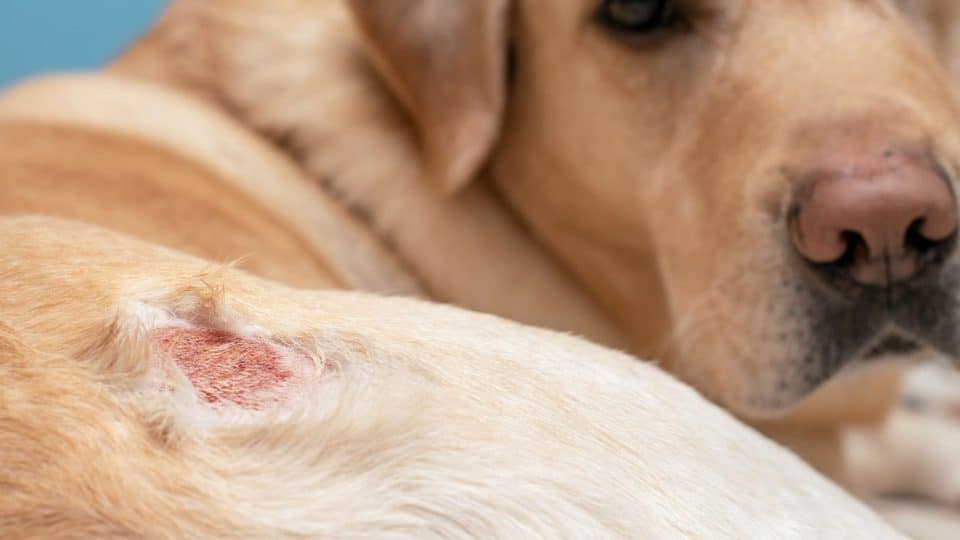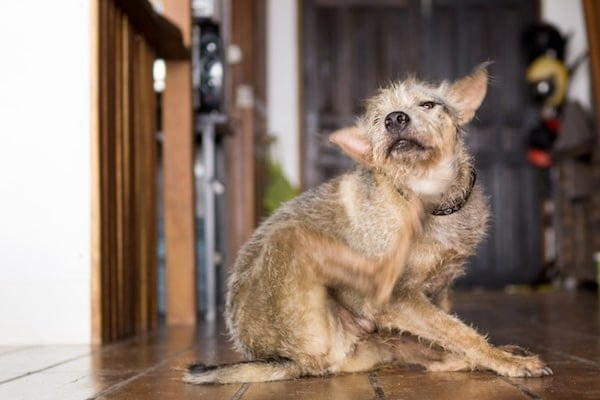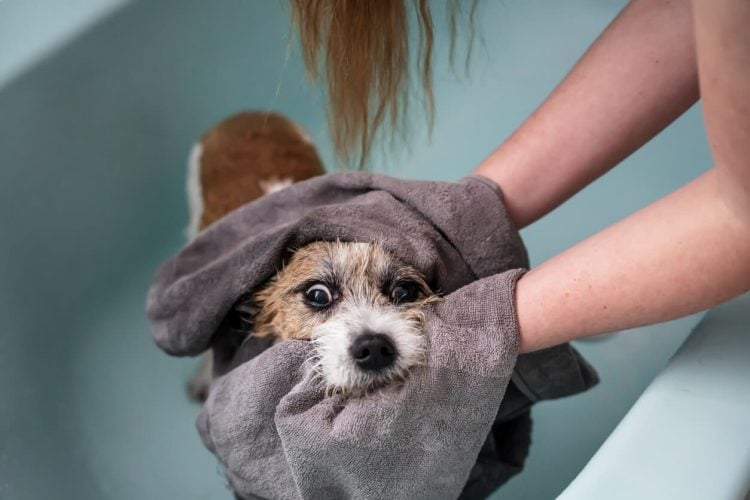- Not a substitute for professional veterinary help.
If you’ve noticed your dog frequently licking or chewing one area of their skin, they may have a hot spot. A hot spot can show up anywhere but will most commonly appear on a dog’s head, neck, limbs, and hips.
Hot spots, or moist dermatitis, are wounds that develop when a dog obsessively licks, chews, or scratches an area in response to pain or itchiness. Licking the irritated skin stimulates the nerve endings, which intensifies the itching and leads to more licking and scratching.
The lick-itch-lick cycle can quickly turn a small red spot into a large, raw, and painful lesion—and these inflamed sores often become infected, says Dr. Antje Joslin, a veterinary consultant with Dogtopia.
Read on to learn all about hot spots, including how to recognize them, what causes them, and how to treat and prevent them.
Signs and Symptoms of Hot Spots
A hot spot can develop in a matter of hours and worsen quickly with continued licking and chewing. They’re usually fairly noticeable on short-haired dogs, but they may go unnoticed under long or thick hair—and hot spots are more common in dogs with longer, thicker coats.
Here’s what to look for:
- Red, inflamed skin
- Oozing or pus from the affected area
- Hair loss around the lesion
- Matted, wet hair on a certain area
- Foul odor
- Intense itching, licking, or chewing at one area
- Pain or sensitivity around the area
Common Causes of Hot Spots in Dogs
Hot spots are typically triggered by something that irritates your dog’s skin. In an attempt to get relief from itchiness, your dog may scratch, lick, or chew the area excessively.
This breaks down the skin’s protective barrier and creates a painful sore, explains Dr. Rachel Cocchiaro, veterinarian and partner at Bahama Road Veterinary. Once the skin is damaged, bacteria can easily enter and cause an infection.
Common causes of skin irritation that can lead to hot spots include:
- Allergies: Allergies to food, environmental triggers, or fleas can all lead to intense itching, Dr. Cocchiaro explains.
- Insect bites: Bites from fleas, mites, ticks, and other insects like bees and mosquitoes can cause intense skin irritation.
- Infections: Skin or ear infections caused by bacteria or yeast can make your dog extremely itchy, Dr. Cocchiaro says. In response, a dog may scratch behind the ears, along the neck, or other parts of their body.
- Moisture or humidity: Hair that gets wet from swimming, rain, or drool and doesn’t dry properly can trap moisture against your dog’s skin, creating the ideal environment for irritation and infection.
- Irritants: Harsh shampoos, topical products, or contact with substances like lawn treatments or household cleaners can irritate skin and cause discomfort.
- Poor grooming or matted fur: Tangles and mats can hold in dirt, moisture, and debris, irritating your dog’s skin and increasing the risk of infection.
- Butt irritation: Blocked or infected anal glands can inflame the skin around your dog’s hindquarters and cause significant discomfort.
- Boredom or anxiety: Dogs dealing with stress, anxiety, or lack of stimulation may lick or chew themselves excessively as a coping mechanism.
- Arthritis or joint pain: Dogs with arthritis or other joint discomfort often lick or chew hips, knees, and other painful areas, which can damage the skin over time.
- Other skin conditions: Skin conditions such as dry skin or seborrhea can lead to itching and irritation that trigger hot spots.
Note: Puppies under 6 months old and senior dogs have weaker immune systems, which may make it more likely they’ll get hot spots and infections.





